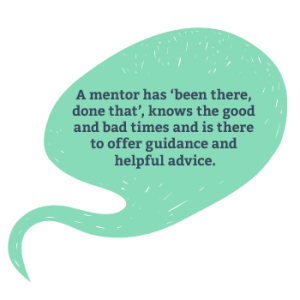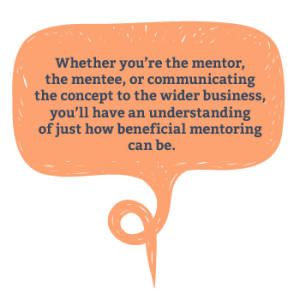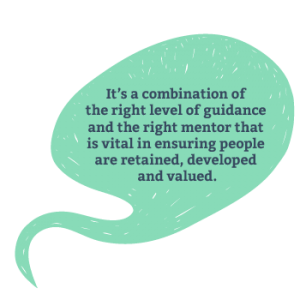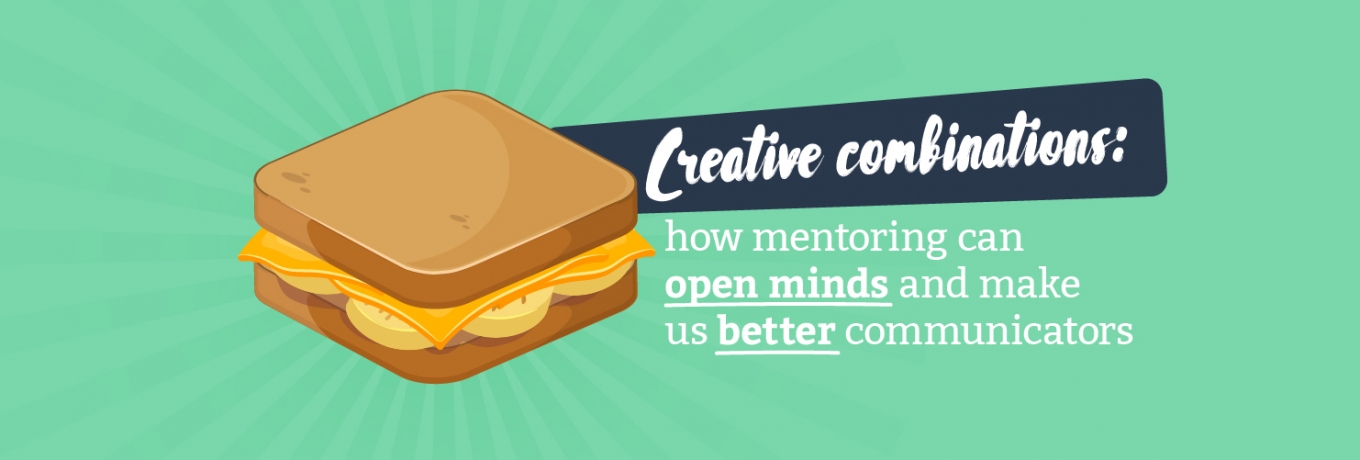Many things work well together. Jelly and ice cream. A cold beer on a hot day. Simon Cowell and his ego. All in perfect harmony.
They’re relationships so well ingrained we don’t give them a second thought. But what about pairings that might seem a little odd? We’re not talking about cheese and banana sandwiches here, but the world of mentoring.
No doubt, as an internal communicator, you’re aware of this world. You may have – or have had – a mentor at some point during your career. You might have been one or thinking about getting one. Whichever of these boxes you’ve ticked you’ll likely have an insight into what it’s about; embracing the spirit of learning and following smart advice.
And do you know what? A mentoring relationship can take on any form.
Usually it’s between two people in the same business, meaning that at the very least, ‘work’ is the mutual tie. But we’ve been looking into some alternative mentoring relationships, and have discovered there are many out there that don’t follow the usual path…
Prison pairings
A mentoring relationship that probably isn’t as publicised as it should be is one where difficult prisoners are paired with vulnerable inmates. Designed to help rehabilitate prisoners to stop reoffending, it puts inmates together who recognise their offences and want to make positive steps towards being law-abiding citizens. Different sentences, personalities and approaches to handling their time behind bars could be of mutual benefit to both parties.
Sporting bonds
Another relationship we’ve seen comes from the world of sport. But not player to player, or manager to player. This one is between a Sky Sports football reporter and a young gymnast. Unusual, right? But, according to the sports pundit there are ‘many parallels between football and gymnastics’, including dealing with injuries and setbacks, winning and losing and keeping up with training. It’s the benefit of experience in this relationship that plays the biggest role here.
‘Big brother’
The Building Better Dads organisation in the US is a good example of mentoring with a difference. Young and single fathers can sometimes lack strong guidance, especially if their own parents are absent. So this organisation puts the mentor in touch with fathers who are striving to be good role models. One young man described his mentor as being like ‘a big brother’, which is a pretty good analogy; i.e. someone who has ‘been there, done that’, knows the good and bad times and is there to offer guidance and helpful advice.
Reverse mentoring
Typically, workplace mentoring is provided by an experienced colleague to one who is less so. ‘Reverse mentoring’, however, is literally that: the less experienced – and often younger colleague – provides the mentoring to their more experienced colleague. It’s a common thought that those with more knowledge of an industry will be the ‘authority’ on best practices and how to take on and win challenges. But, as the world evolves at a dizzying rate, younger generations are experiencing life in a completely different way to their older counterparts. So, don’t assume the ‘kids’ have nothing to offer; their experiences and outlooks are just as relevant, and probably more future-ready too.
These are just a few examples of how modern day mentoring relationships know no limits.
And while they’re all different, there are two crucial elements that bind them together:
- They’re all evidence that mentoring doesn’t have to follow the norm
- They’re all evidence that mentoring really does work.
What does successful mentoring look like?
We’ve talked about a range of alternative mentoring options which, for those involved, work. But how? And is it the same as ‘traditional’ mentoring? The conversations may be different, but essentially, yes, it is the same. There’s recognition that guidance and support is needed, or that something needs to be learned with a bit of a helping hand. And if the outcome is that the mentee progresses / continues with their work / lifestyle with the support and care they’ve received, then the mentor has done their job. And, hopefully, done it well.
In internal communication, whether you’re the mentor, the mentee, or simply communicating it to the wider business, you’ll understand just how beneficial it can be.
It’s a great assist to professional – and personal – development. Having an idea of what you want to achieve from the mentoring – new skills, overcoming challenges, etc. – means that in time you’ll be able to get exactly what you want out of it. And you might also find that you develop a close friendship with your mentor that you didn’t have before.
So what links all of these elements? Communication.
Open and honest dialogue is the best way to get the most productive results from mentoring.
And if you’re the one communicating it, it’s your job to promote mentoring properly.
Yes, it’s about embracing learning and following advice, but it should also be fun. It’s not a way to spend less time at your desk, nor is it an excuse to have a bit of a chinwag. People are an organisation’s best asset; without them, a business can’t grow or change. So people need careful nurturing and consideration. And it’s a combination of the right level of guidance and the right mentor that is vital in ensuring people are retained, developed and valued.
At Alive, we know a thing or two about mentoring and we can help comms teams to understand and communicate the huge benefits that mentoring can bring.
If you feel this is something you’d like support with, get in touch today. We wont baffle you with science or tell you the best way to go about communicating to your organisation’s people’ we’ll simply advise and offer practical support. Because that’s what makes a long and successful relationship. Oh, and the tea and biscuits.
















